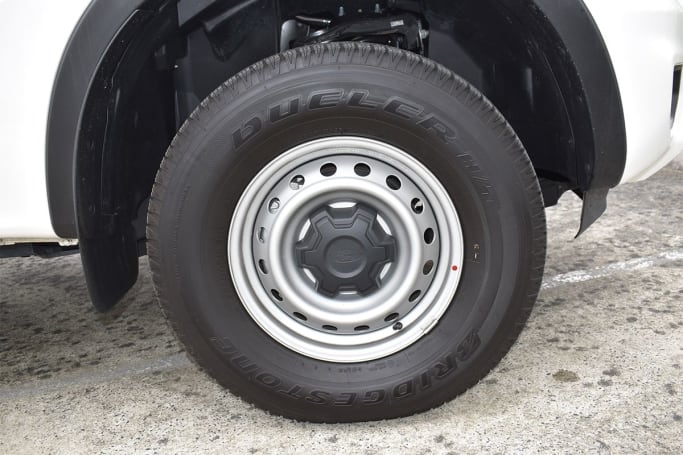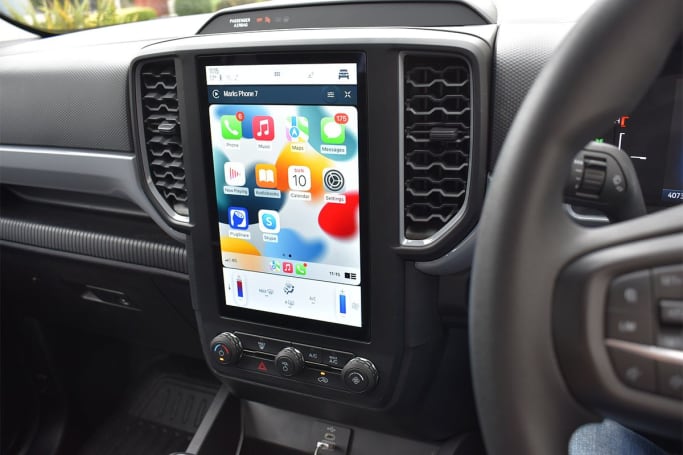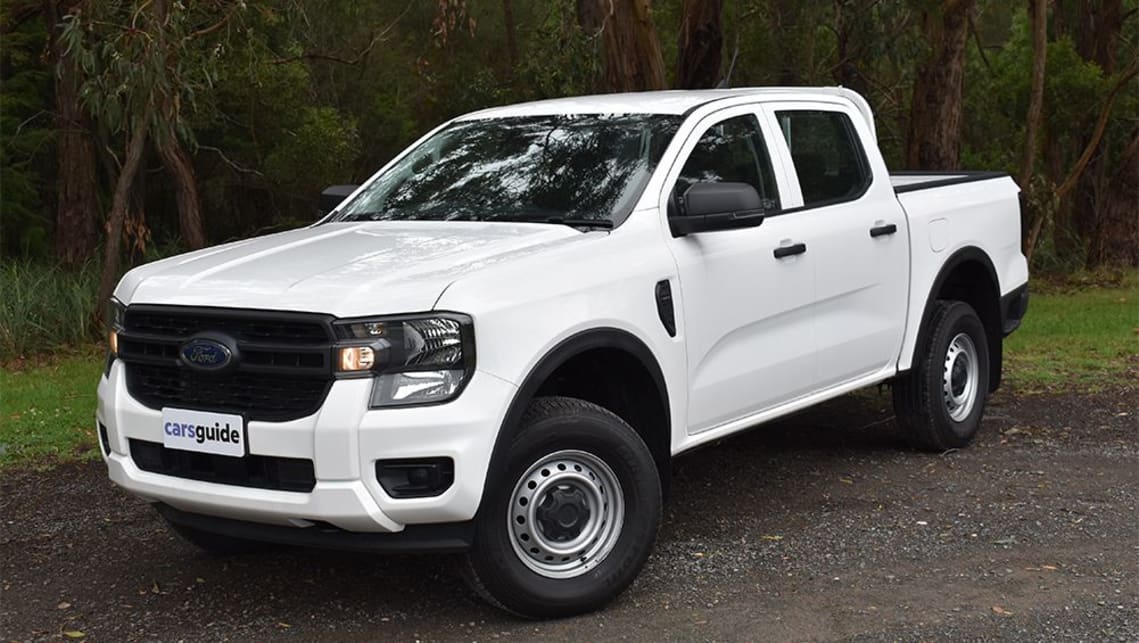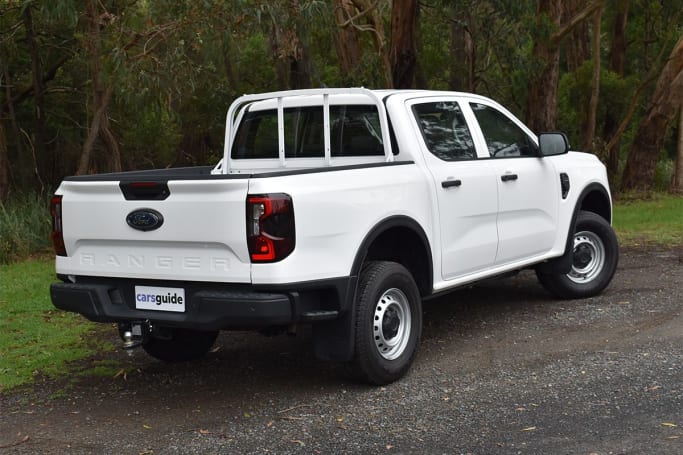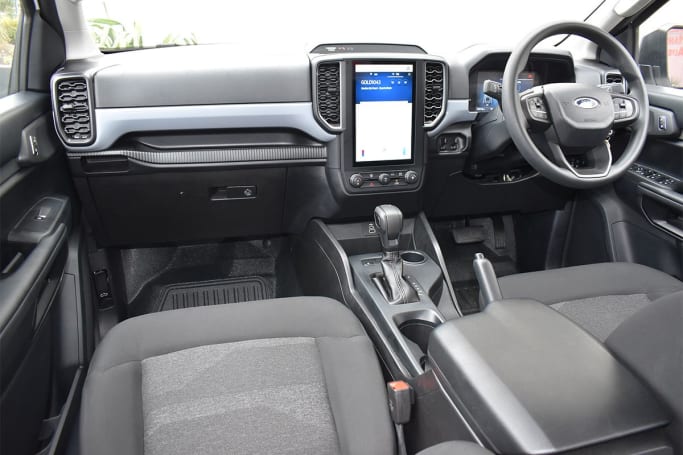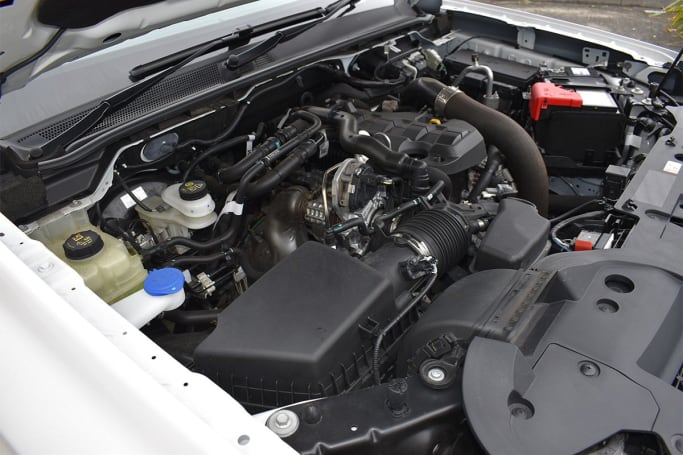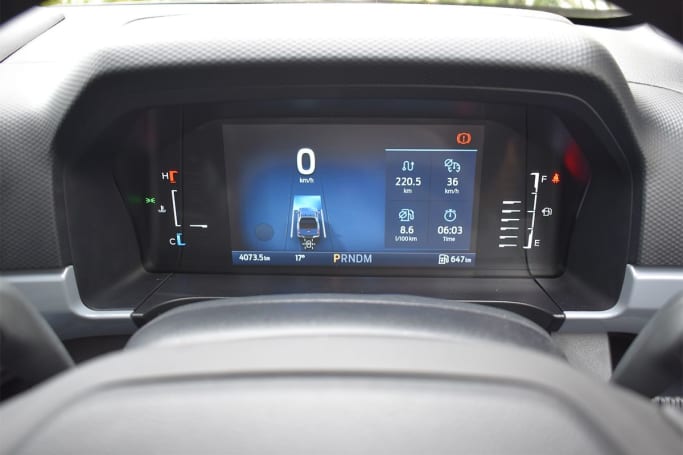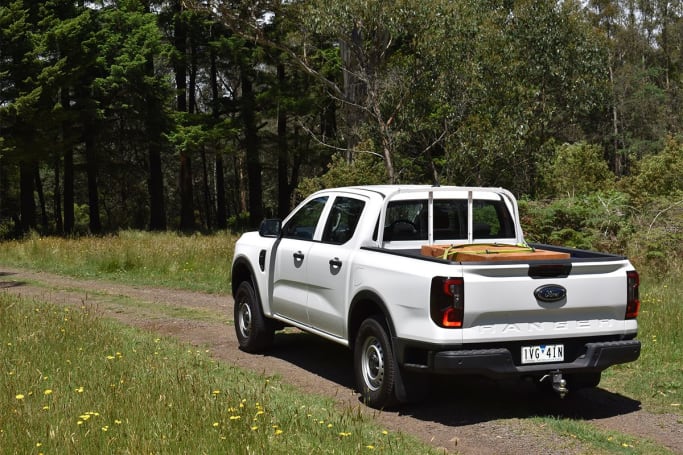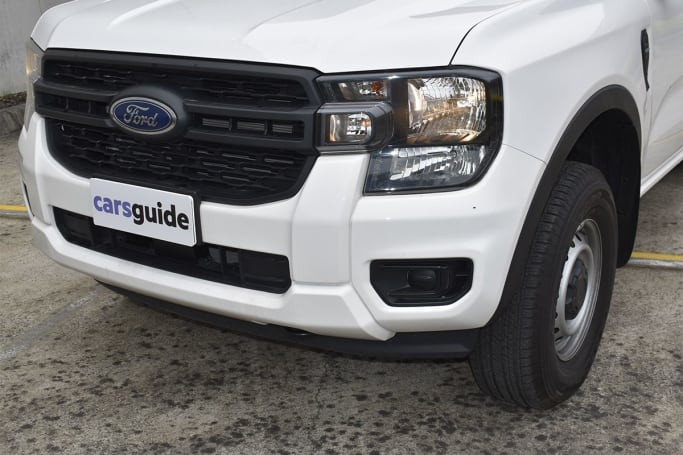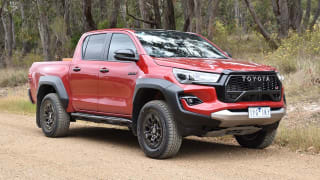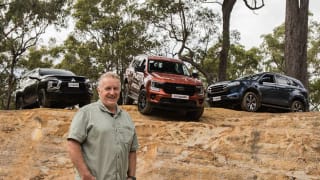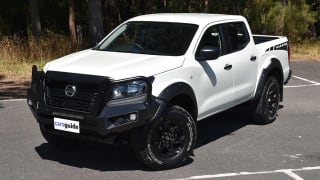Thanks to its relatively light 2093kg kerb weight, our test vehicle’s 3250kg GVM allows for an impressive 1157kg payload rating.
It’s also rated to tow up to the category-benchmark 3500kg of braked trailer and given its big 6200kg GCM (or how much it can legally carry and tow at the same time) that would still leave a generous payload capacity of more than 600kg.
These are strong numbers well suited to a variety of heavy-hauling tasks.
The load tub’s floor is 1547mm long and 1584mm wide with 1224mm between the wheel housings, allowing it to carry an 1165mm-square Aussie pallet which can be secured using a choice of six load-anchorage points (three each side).
A steel-framed bulkhead doubles as robust protection for the cabin’s rear window and a handy place on which to lean and secure items that are too long to fit in the tub.
-
 Thanks to its relatively light 2093kg kerb weight, our test vehicle’s 3250kg GVM allows for an impressive 1157kg payload rating. (Image: Mark Oastler)
Thanks to its relatively light 2093kg kerb weight, our test vehicle’s 3250kg GVM allows for an impressive 1157kg payload rating. (Image: Mark Oastler)
-
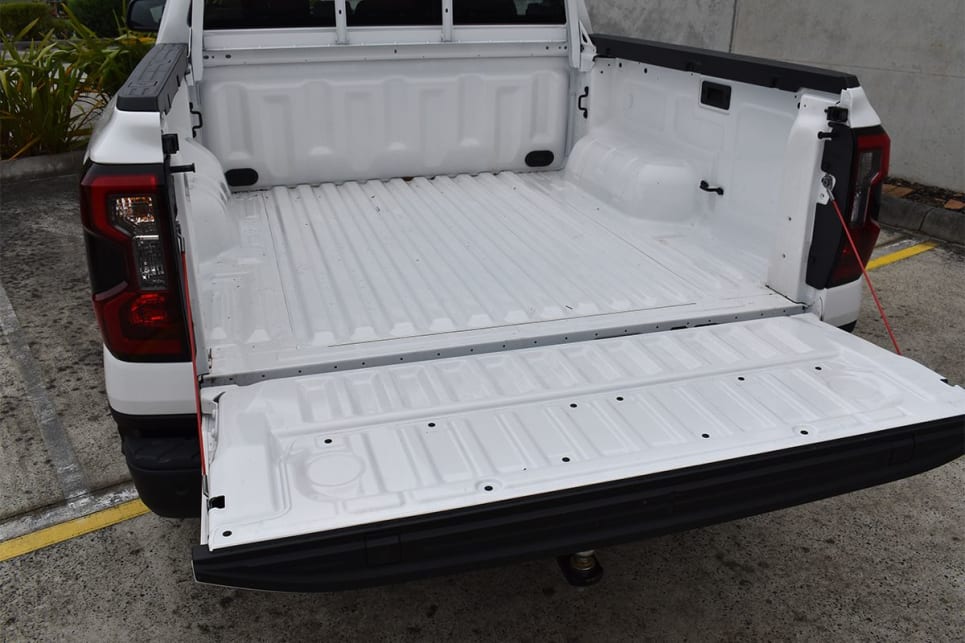 The load tub’s floor is 1547mm long and 1584mm wide with 1224mm between the wheel housings. (Image: Mark Oastler)
The load tub’s floor is 1547mm long and 1584mm wide with 1224mm between the wheel housings. (Image: Mark Oastler)
Its flush-fitting load retainers can pivot and lock into a vertical position on each side, to effectively ‘book-end’ loads when securing them.
The tub has internal lighting thanks to small but bright LEDs embedded in the sidewalls. These are welcome not only when accessing the tub at night or in poorly-lit internal spaces, but also if it's fitted with a hard tonneau cover.
There are concave side-steps behind the rear wheels, which make accessing the load tub easier and safer than standing on top of the tyres as owners often do, because if they're wet or muddy it’s easy to slip off.
Six plastic caps (three each side) along the top edges of the sidewalls can be removed to provide access to internal mounting points for numerous structures, like ladder racks.
The top edge of the tailgate incorporates a 1.3-metre ruler and a pair of spring-loaded ‘trapdoors’ which provide access to the tailgate’s internal cavity.
-
 Features fabric seats and vinyl floors. (Image: Mark Oastler)
Features fabric seats and vinyl floors. (Image: Mark Oastler)
-
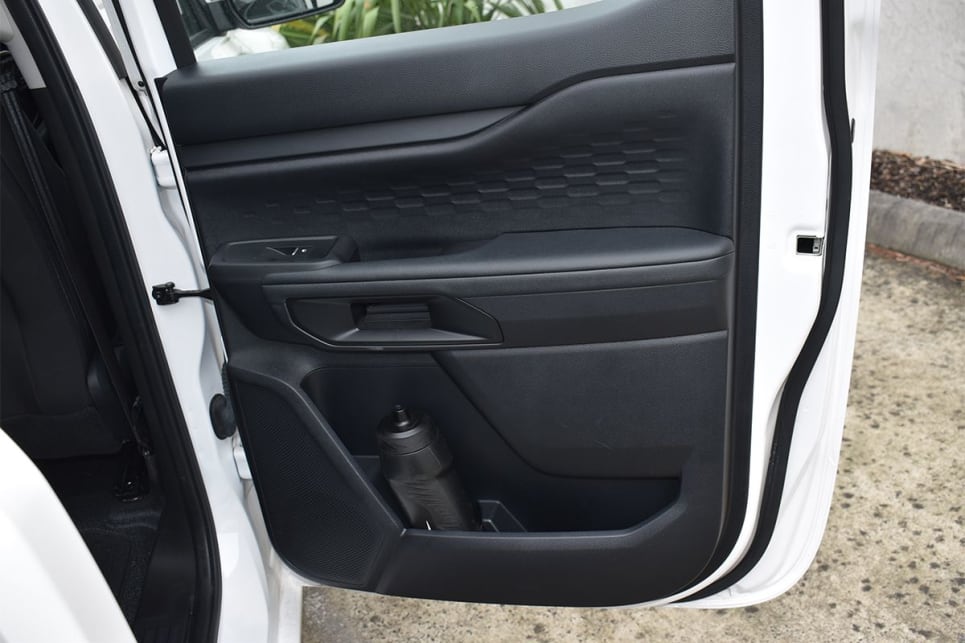 Rear seat passengers get a bottle holder and bin in each door. (Image: Mark Oastler)
Rear seat passengers get a bottle holder and bin in each door. (Image: Mark Oastler)
This allows for the use of G-clamps, which can be inserted into these holes when using the open tailgate as a workbench to clamp materials in place when cutting, drilling, sanding, etc.
Front-of-cabin storage includes dual bottle holders and a bin in each door, plus an overhead glasses holder and, on the passenger’s side, an open shelf with glove box below.
The centre console has open storage up front, a pair of small-bottle/cupholders in the centre and a lidded-box at the back which doubles as a driver’s elbow rest.
Rear seat passengers get a bottle holder and bin in each door, another bin in the rear of the centre console and a pocket on the front passenger seat’s backrest, but with no fold-down centre armrest there are no dedicated cupholders.
The one-piece seat base can also swing up and be stored vertically if more internal luggage space is required, or to access two large underfloor storage compartments.
